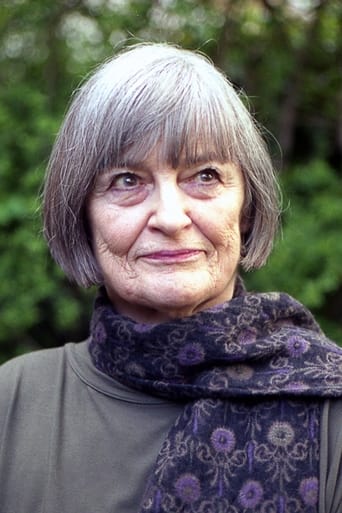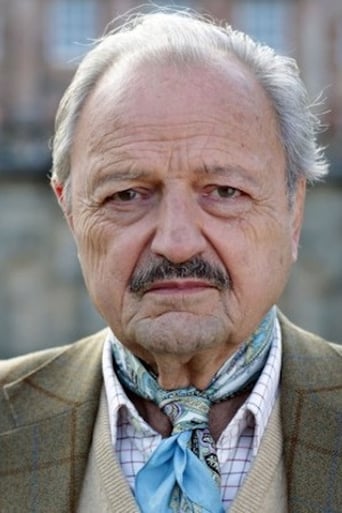

Isadora Duncan, the Biggest Dancer in the World (1966)
The outrageous life of the American dancer of the 1920s, Isadora Duncan, whom Ken Russell described as "part genius and part charlatan".
Watch Trailer
Cast
Reviews
Brilliant and touching
If the ambition is to provide two hours of instantly forgettable, popcorn-munching escapism, it succeeds.
It's the kind of movie you'll want to see a second time with someone who hasn't seen it yet, to remember what it was like to watch it for the first time.
Although I seem to have had higher expectations than I thought, the movie is super entertaining.
Made two years before Karel Reiz's polished, lengthy (168 minutes) larger budgeted film, Isadora, featuring Vanessa Redgrave, Ken Russel utilizing the same writer (Sewell Stokes) made this modestly budgeted, coarser work with doughy for a dancer Vivien Pickles. Received well in its day, the Reiz work is impressive in look and performance but the grit, bite and audacity in Russell's in under an hour's running time offers a far better ride.Opening with a brief outline of the subject Russell quickly amps up the energy as Isadora moves from one lover, school and cause to the next that takes her from the US and Europe before embarking for communist Russia to open a new school. A life filled with controversy and tragedy Russell fills the biography with provocative imagery, conveying much of it with a lively burlesque that moves things along at a brisk pace. Far from having the gamine like grace and equiline features of Redgrave, Vivian Pickles offers a somewhat slovenly and abrasive interpretation of the dancer that is perfectly suited to convey Russell's darkly humorous sensibility.
This is fine, a well intentioned and lovingly created early TV piece from Ken Russell. It is a little uneven and although to some extent that became a trademark of the director, here it is probably budget restraints that mean some scenes look less 'cinematic' than others. The music and dance sequences are immaculate and I guess that is the main thing, its just that I rather tire of the repeated success and failure scenario. The children (and a lot of them) are very well dealt with and appear very natural. Vivian Pickles does very well as the leading player and dances as well as is required, baring in mind that Duncan was herself no great dancer in the traditional sense.
Not even dance per se, just movement. Great interpretation by Vivian Pickles, who captures both the physical grace and tumultuous personality we associate with the legend of Isadora Duncan. Ken Russell's expressionistic style of film-making, here in stark black and white, is so well suited to the ups and downs of such a highly dramatic biography. As usual, even with a limited budget, Russell offers a visual feast filling the screen with lavish interiors and frenzied close-ups, juxtaposing unrelated scenes simultaneously - quite a different approach than Karel Reisz's more literal-minded "Isadora" with Vanessa Redgrave. This is art for art's sake, a perfect meeting of minds.
This is my pick for the greatest biographical film of all time. Shot in grainy black and white, on an undoubtedly shoestring budget, for the BBC back in 1966, it still has the technical advantage of being on film rather than videotape (as was the habit of British television at the time).ISADORA (as it was known, simply, in its American TV showings -- and on its title card) has got everything that led to Ken Russell's reputation as the most innovative and outrageous filmmaker of the late 1960's: mad pacing, undisguised slow cranking, scattershot out-of-sequence editing, an anachronous 1960's pop approach to an early 20th century subject, over-the-top performances, etc, etc, and the refusal to represent Isadora Duncan as any sort of divinely-inspired artiste.Rather, Russell's Isadora is a mad force of nature on a rampage, cutting a swath through America, Europe, Russia and back through America to Europe again -- browbeating everyone in her path to accept her form of expression as the only valid choice in the world of dance. She devours men like a praying mantis and leaves no one unscathed in her path, all the while consuming herself from the inside out. Though not pretty, she is irresistable; not graceful, her dancing is mesmerizing; not at all nice, she is vulnerable and even lovable. By sheer force of will, she imposed a new esthetic on modern dance and made the world take it seriously -- to become one of the most famous figures in the history of the arts.Coming from the same home town area (San Francisco), I formed an early interest in Isadora Duncan, having first heard of her in my late teens, just prior to the time this TV film and Karel Reisz' big-budget biopic emerged. This one aired first and left me spoiled to appreciate the sanguine pinings and hand-wringing that vitiated Reisz' bigger effort with Vanessa Redgrave. Redgrave didn't have much of a chance of living up to my expectations, anyway, in conveying Isadora's power and importance, let alone her emotional makeup, since I had already seen it done in what I still consider to be the single best screen performance by an actress -- EVER! -- in Vivian Pickles' interpretation of her. Most people likely only remember Pickles as Bud Cort's hillariously horrifying mother in HAROLD AND MAUDE, but anyone lucky enough to have seen her here knows what a tragedy it is that the movies never found a far greater place for her as a leading actress.When Pickles shouts the immortal words, "Au revoir mes amis, je vais a la gloire!," her gusto truly adds to the delight of hearing one of the most famous exit lines of all time (apocryphal or not).


